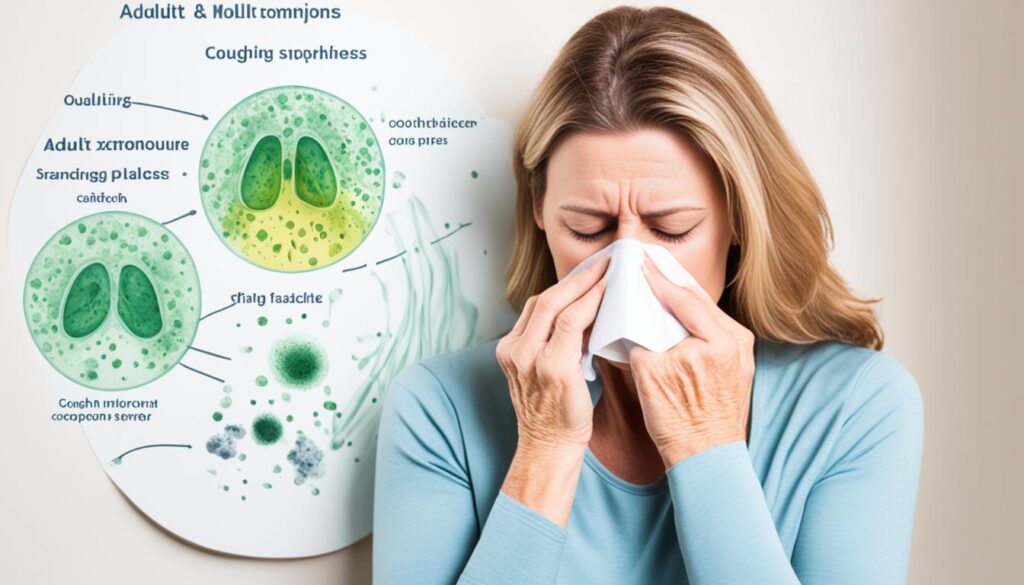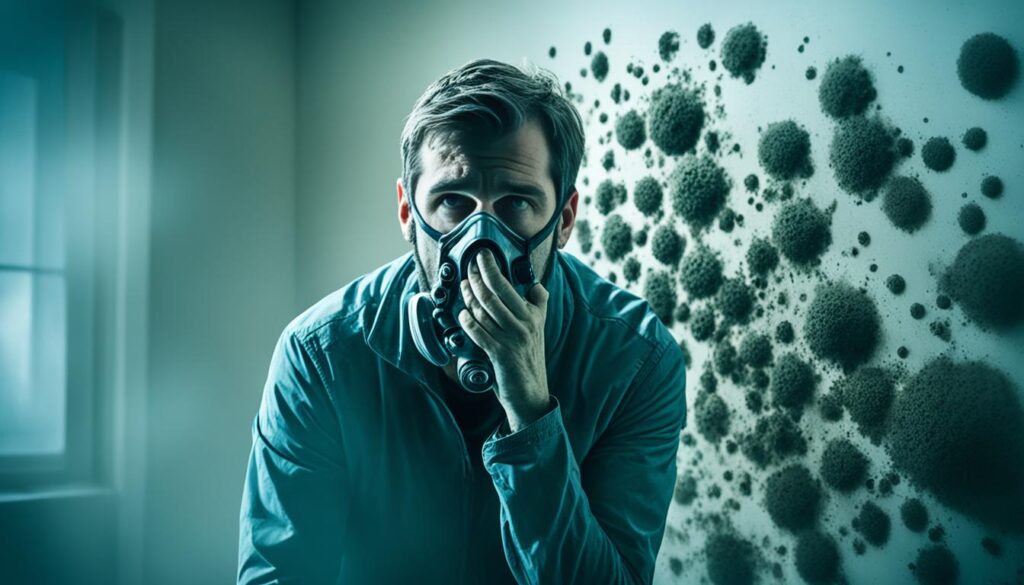
Mold Exposure Symptoms in Adults: Know the Signs
Welcome to our informative article on mold exposure symptoms in adults. Mold is a common issue that can occur in homes, workplaces, and other indoor environments. While molds play a vital role in nature, their presence indoors can have adverse effects on our health, particularly in adults.
Exposure to mold can lead to various symptoms that may vary depending on individual sensitivity and the type of mold present. Recognizing these signs is crucial for timely intervention and mitigation to protect your well-being.
In this section, we will discuss the symptoms that adults may experience due to mold exposure. By understanding these signs, you can better safeguard your health and take necessary action to address any potential mold-related issues.
Key Takeaways:
- Understanding mold exposure symptoms in adults is crucial for protecting your health.
- Recognizing common signs can help identify potential mold-related health issues.
- Seek professional assessment and remediation services if you suspect mold in your environment.
- Timely intervention is essential to mitigate health risks associated with mold exposure.
- Take necessary steps to prevent moisture buildup and inhibit mold growth in indoor spaces.
Common Mold Exposure Symptoms in Adults
When adults are exposed to mold, they may experience a range of symptoms that can vary in severity and presentation. It’s important to be aware of these common mold exposure symptoms to identify potential health issues and seek appropriate medical attention. The following are some of the most frequently observed symptoms in adults:
- Allergy-like symptoms: Sneezing, coughing, and nasal congestion are often seen in individuals exposed to mold. These symptoms can resemble seasonal allergies, making it crucial to consider mold exposure as a possible cause.
- Respiratory issues: Mold spores inhaled from the air can cause respiratory problems, such as difficulty breathing, wheezing, and chest tightness. These symptoms may worsen in individuals with pre-existing respiratory conditions, like asthma or chronic bronchitis.
- Skin irritation: Mold exposure can lead to skin problems, including rashes, itching, and hives. These symptoms may occur on areas of the body that have come into direct contact with mold or its spores.
- Headaches and fatigue: Mold toxins can affect the central nervous system, resulting in frequent headaches and persistent fatigue. These symptoms can be debilitating, impacting an individual’s daily life and productivity.
- Allergic reactions: In some cases, adults may develop severe allergic reactions to mold exposure. This can manifest as swelling, difficulty swallowing, or even anaphylaxis, a life-threatening allergic response that requires immediate medical attention.
If you or someone you know is experiencing these common mold exposure symptoms, it’s important to take them seriously and consult a healthcare professional for a proper diagnosis. Identifying the underlying cause of these symptoms is essential for implementing effective treatment and remediation strategies.
Understanding the common symptoms associated with mold exposure in adults is the first step towards protecting your health and well-being. In the next section, we will explore how mold exposure specifically affects the body and the potential health risks it poses.

How Mold Exposure Affects the Body
In this section, we will explore how mold exposure can impact the human body and delve into the physiological processes involved. Understanding the mechanisms of mold’s impact on the body is crucial to comprehending the specific health effects experienced by adults.
Mold exposure can have a range of detrimental effects on an individual’s health. When mold spores are inhaled or come into contact with the skin, they can trigger various reactions within the body. These reactions are primarily attributed to the mycotoxins produced by certain types of molds.

Mycotoxins are toxic substances released by molds as part of their natural metabolic processes. When humans are exposed to high levels of these mycotoxins, they can disrupt normal physiological functions, leading to a variety of health issues.
The Impact of Mold on the Respiratory System
The respiratory system is particularly vulnerable to mold exposure. When mold spores are inhaled, they can irritate the airways and trigger respiratory symptoms such as coughing, wheezing, and shortness of breath. Prolonged exposure to mold can also contribute to the development or exacerbation of respiratory conditions, such as asthma and allergies.
The Effects of Mold on the Skin
Contact with mold can also have negative effects on the skin. Mold spores and mycotoxins can cause allergic reactions, leading to skin rashes, itching, and inflammation. Individuals with pre-existing skin conditions may experience worsening symptoms when exposed to mold.
Mold’s Impact on the Immune System
Mold exposure can weaken the immune system, making individuals more susceptible to infections and illnesses. The toxins released by molds can disrupt immune cell function and compromise the body’s ability to defend against pathogens. This weakened immune response can result in frequent infections, prolonged illnesses, and increased susceptibility to other environmental toxins.
“The toxins released by molds can disrupt immune cell function and compromise the body’s ability to defend against pathogens.”
Moreover, certain individuals, such as those with compromised immune systems, may be at an increased risk of developing severe reactions to mold exposure. This includes individuals with HIV/AIDS, autoimmune diseases, or undergoing immunosuppressive treatments, such as chemotherapy.
| Health Effects of Mold Exposure | System Affected |
|---|---|
| Allergic reactions | Respiratory, Skin |
| Asthma exacerbation | Respiratory |
| Respiratory infections | Respiratory, Immune |
| Immune system suppression | Immune |
| Neurological symptoms | Neurological |
It is important to note that the specific health effects of mold exposure can vary depending on various factors, including the type of mold, duration of exposure, and individual susceptibility. If you suspect mold exposure and are experiencing unexplained health issues, it is recommended to consult with a healthcare professional for accurate diagnosis and appropriate treatment.
Conclusion
In conclusion, understanding the signs and symptoms of mold exposure in adults is crucial for protecting your health and well-being. By recognizing these symptoms, you can take necessary steps to address any potential mold-related issues.
Throughout this article, we have discussed the common mold exposure symptoms that adults may experience, ranging from respiratory issues to skin irritations and allergic reactions. We have also explored how mold exposure can impact the body, affecting various systems and potentially leading to more severe health problems.
If you suspect mold in your environment, it is important to seek professional assessment and remediation services. These experts can determine the extent of the mold problem and provide effective solutions to mitigate its effects on your health.
Remember, early detection and prompt action are key to preventing further health complications associated with mold exposure. Stay vigilant and prioritize your well-being by taking necessary measures to create a mold-free living environment.




